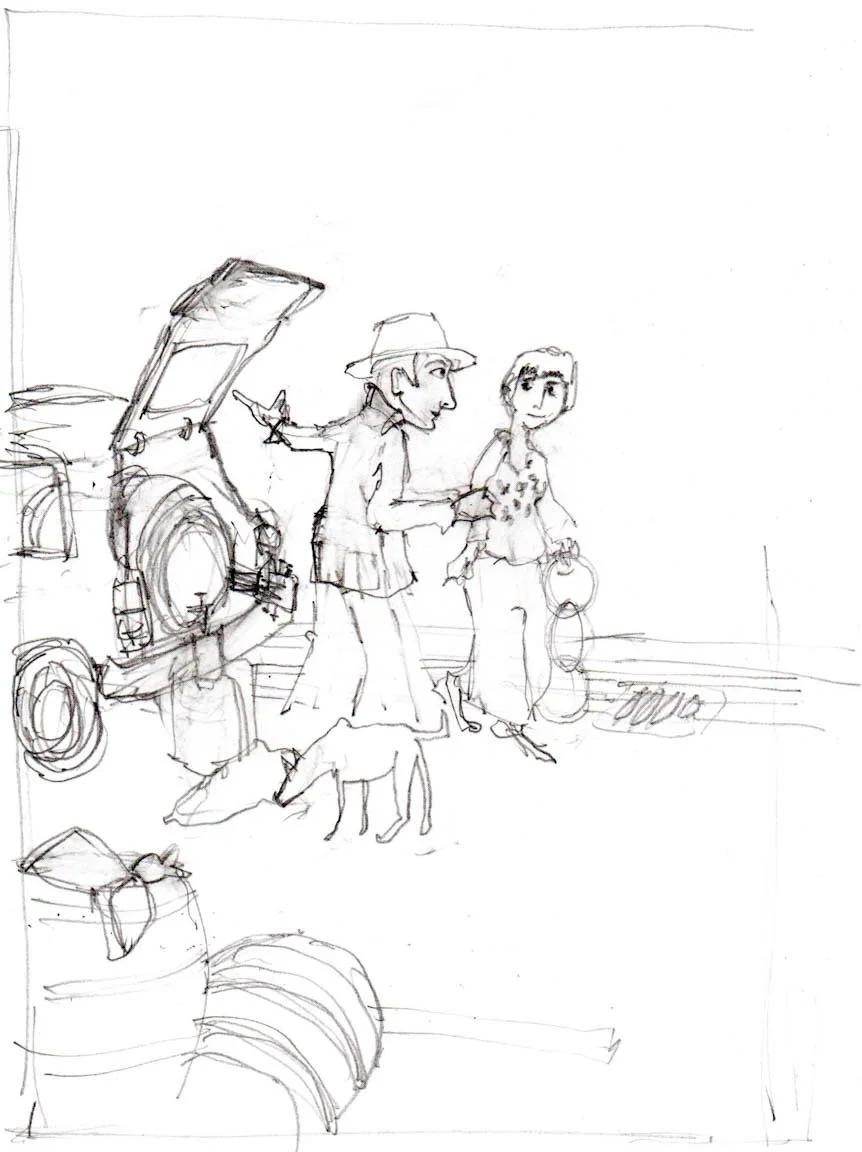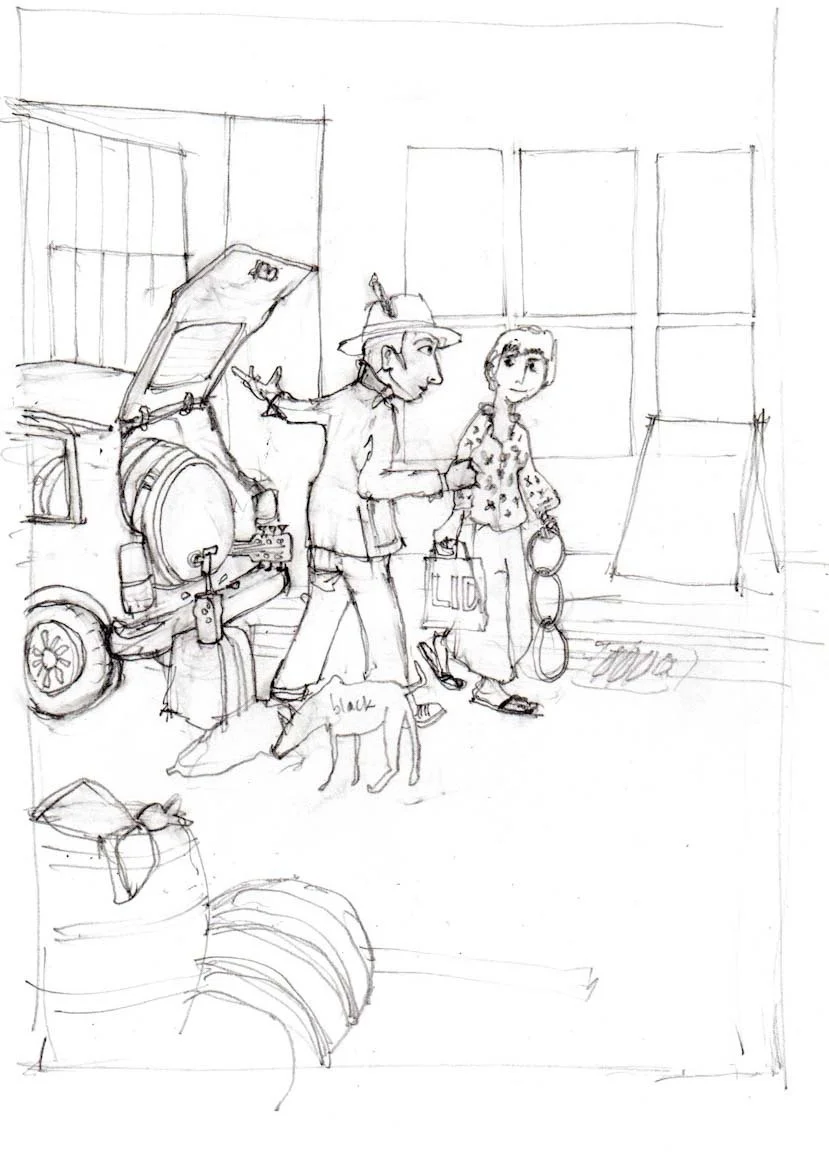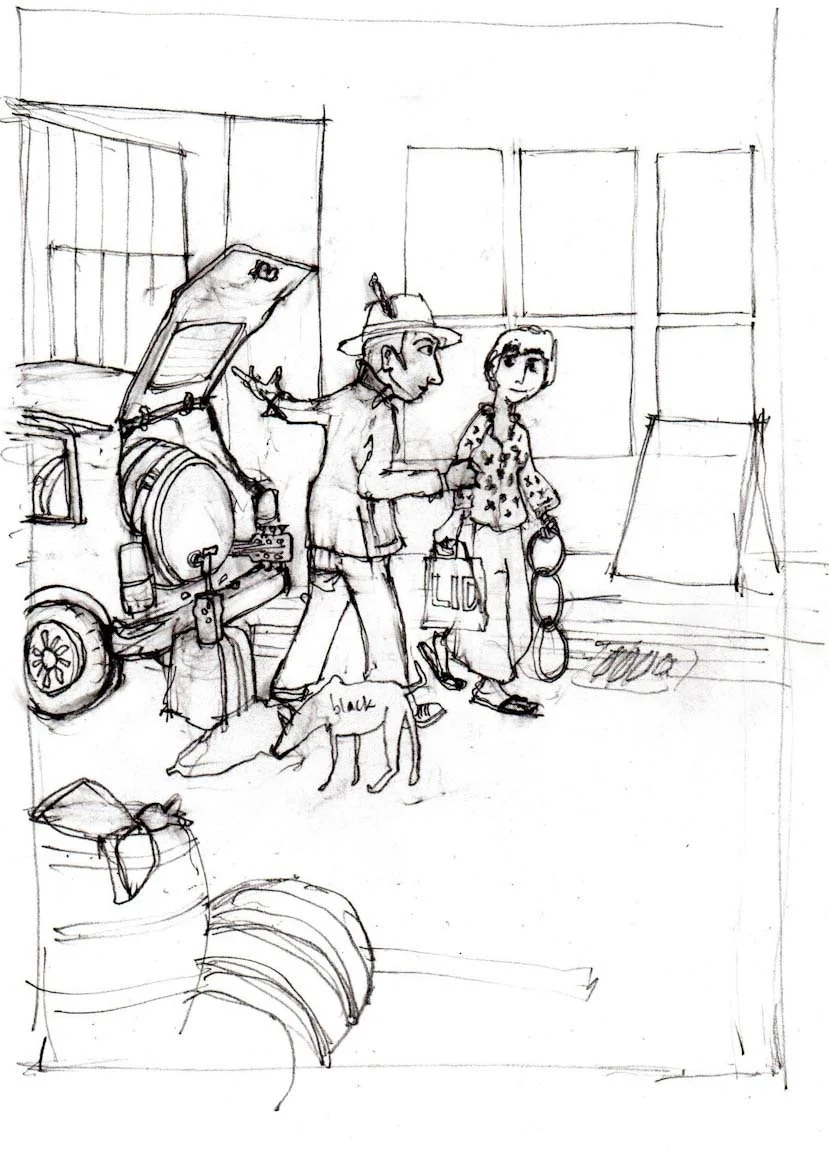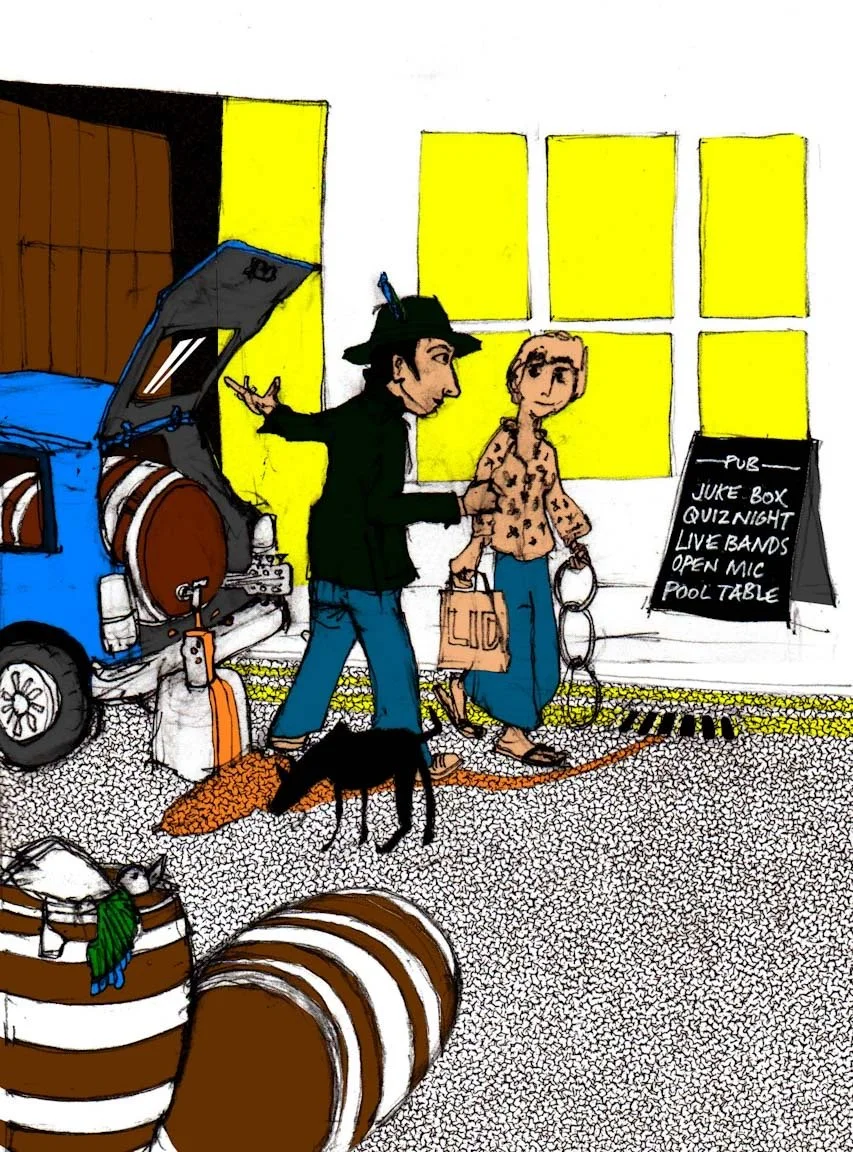The Three Tuns
(Hidden high street series)
The Three Tuns delves into the complexity of local life, blending humour, personal narrative, and social commentary into a single compelling image. The work reimagines a Bass brewery sign from a back room of the pub, transforming its rustic charm into a layered and introspective commentary on identity, relationships, and the role of alcohol in culture.
The silkscreen print retains key elements of the original sign, such as the postures of the two figures, the lit window, and the open doorway. However, these have been reinterpreted with personal and symbolic details that add depth to the scene. A hatchback car replaces the traditional cart, its boot revealing a (tun) barrel and the top of my ever-present guitar—symbols of both journey and personal expression. The flowing beer, rendered in a urine-like colour, spills into an overflowing glass, forming a puddle that trickles down the drain. This visual motif critiques the role of alcohol in individual lives and society while tying into the darker themes present in the work.
The black dog, a metaphor for depression, drinks from the puddle—a stark and poignant detail that anchors the piece’s emotional weight. The presence of a dead duck, lying motionless on the road, furthers the sense of melancholy, while the feather tucked into the hat of the self-portrait figure adds a layer of enigmatic symbolism. The female figure, interpreted as my partner, engages in a silent argument with the male figure, yet the nature of their conversation remains ambiguous, inviting viewers to project their own narratives onto the scene.
Even the pub sign becomes part of the commentary—listing what I imagined an ideal local pub should offer, in contrast to the homogenised, impersonal spaces typified by large pub chains. This critical stance reflects the tension between my disdain for the negative role of alcohol in culture and my celebration of community spaces.
As the darkest piece within the Hidden High Street series, The Three Tuns encapsulates the complex interplay of personal identity, communal spaces, and societal critique. It is a work that asks difficult questions while remaining rooted in the familiar imagery of British life, inviting viewers to engage with both its humour and its haunting undercurrents.
This work is from the Hidden High Street series - an exploration of the often unnoticed spaces and everyday encounters that form the essence of our shared communities.
Read more about the Hidden High Street series here
Produced as a limited edition - hand‑pulled in the studio, this work is signed/stamped and numbered to ensure their authenticity and collectability. Each edition is created using traditional silkscreen techniques on archival paper, with every layer printed by hand.
Collectors can choose to acquire these works in two forms:
• On Paper — the edition in its purest state, unframed, offering flexibility for personal presentation.
• Artist‑Framed — mounted and framed by the artist, using bespoke methods to present the work as a complete, ready‑to‑hang artwork.
This dual approach allows the work to be appreciated either as a print to be lived with and framed to taste, or as a finished object crafted entirely within the artist’s practice.

















